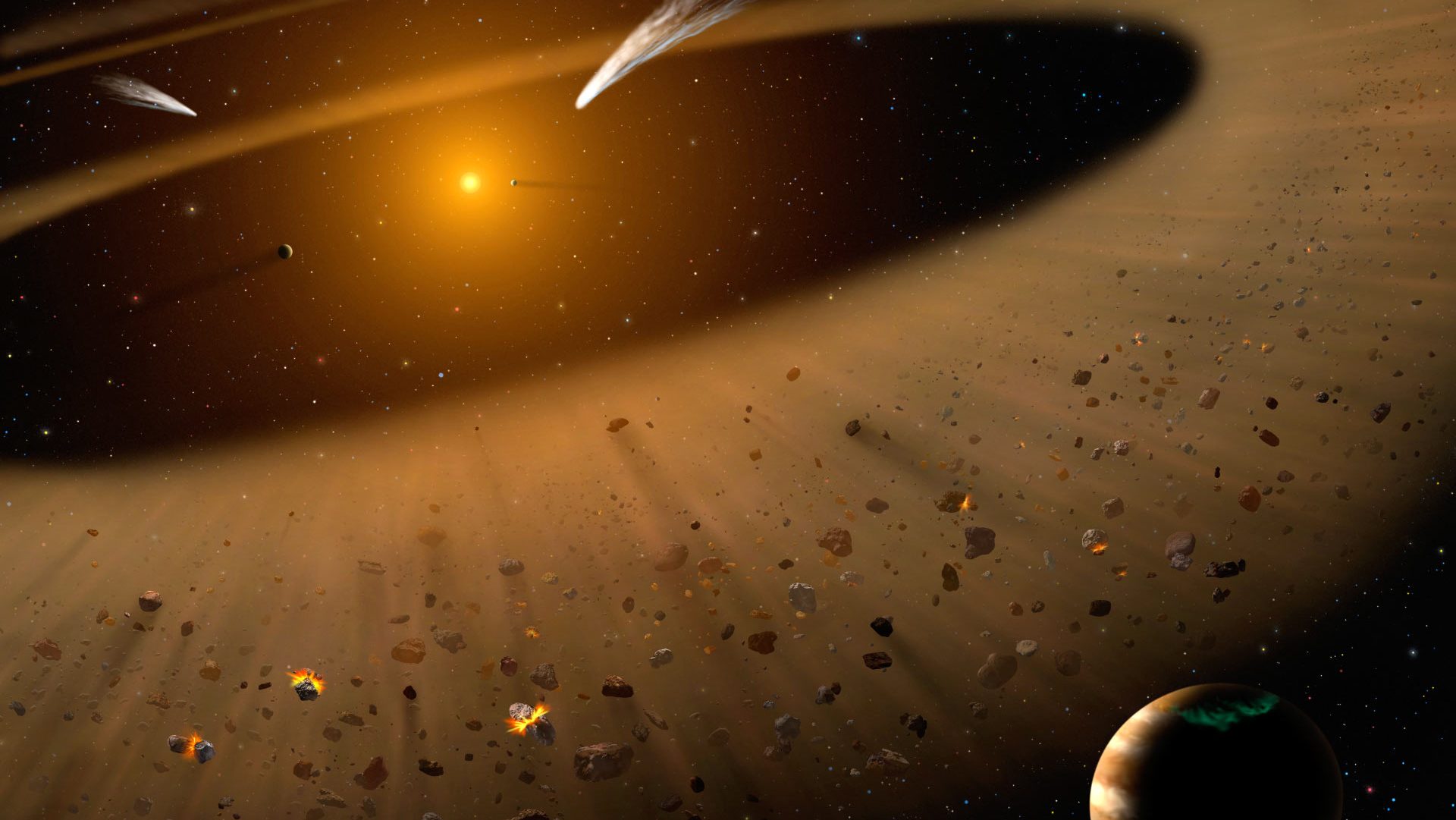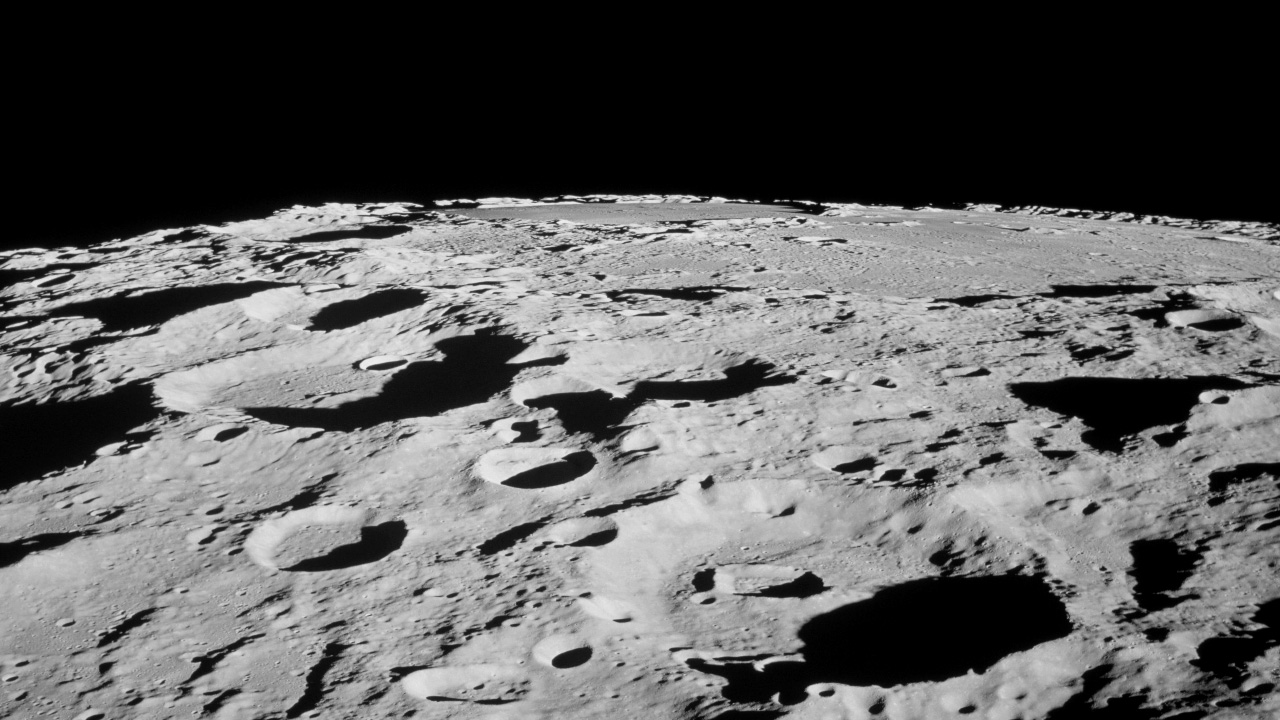7 changes destroying the Moon would have on planet Earth

- At more than a quarter of the Earth’s radius and over 1% of its mass, the Moon is the largest orbiting satellite of any rocky planet in our Solar System by far.
- Although we most commonly associate the Moon’s major effects with the tides here on Earth, it has many other effects on our planet as well.
- If we were somehow able to destroy the Moon, these seven major changes would quickly ensue. Here’s why we should keep our Moon, rather than seek to destroy it.
Our Solar System began to take shape about 4.56 billion years ago, as the Sun’s core ignited nuclear fusion, and the protoplanetary disk surrounding it then began to fragment and form tiny protoplanets. After about 50 million years had elapsed, many of the worlds — including planets and moons — that we’re familiar with had already taken shape. However, a fateful collision between Earth and a large, now-subsumed protoplanet named Theia kicked up an enormous cloud of debris that surrounded our home planet in a torus-shaped structure known as a synestia. Some of that material escaped into interplanetary space; some fell back onto Earth, but the remainder coalesced and formed the largest natural satellite ever found around a rocky world: our own Moon.
For the past 4.5 billion years, the Moon has affected Earth in many ways. It’s the major cause of tides on our planet, and also helps stabilize our axial tilt over time. It’s the primary cause of why the duration of a day on Earth lengthens over time, and it’s the cause of all total solar, annular solar, and lunar eclipses that our world has ever experienced. It’s also been linked to a variety of phenomena that don’t hold up to scientific scrutiny, including:
- insanity (or lunacy),
- animal behavior (e.g., howling at the Moon),
- farming cycles (such as a harvest moon),
- and even women’s menstrual cycles.
One fascinating question to consider is how the Earth would change if we actually managed to destroy the Moon. These seven changes are likely the most significant.
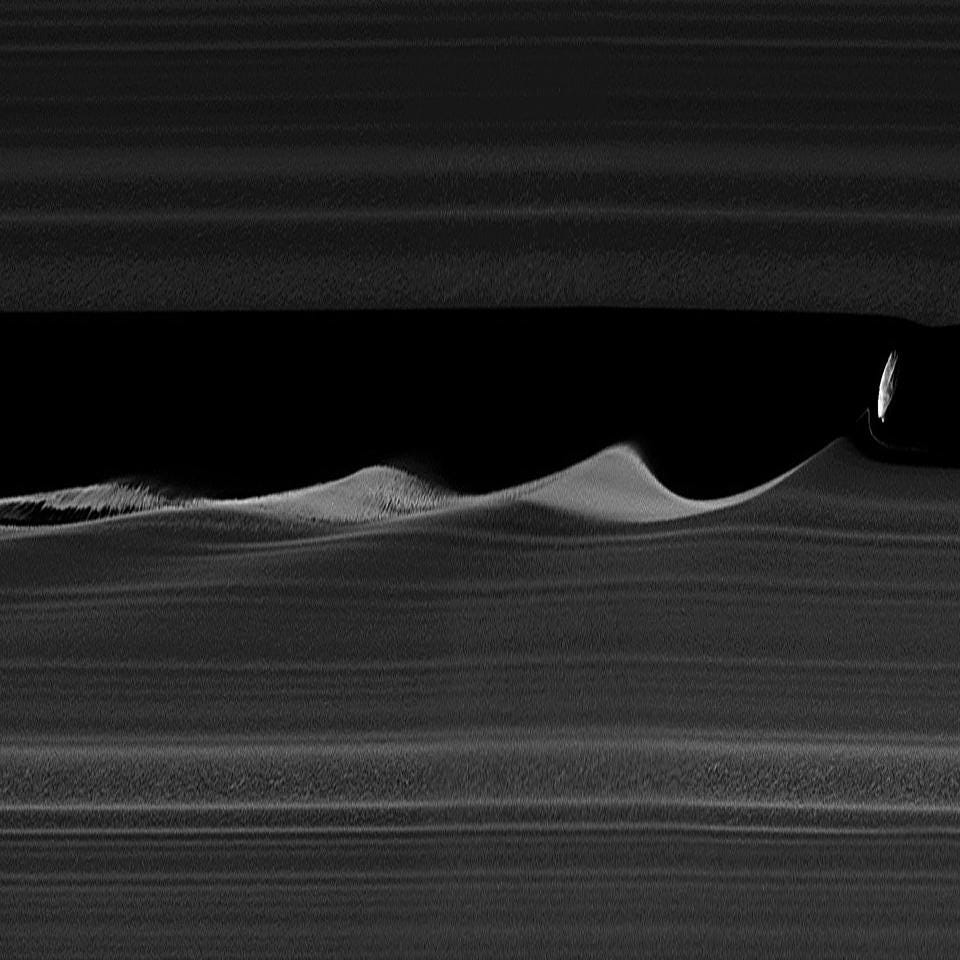
1.) Earth would experience great damage, but life would still persist. Remember, we’re not talking about just getting rid of the Moon — such as by gravitationally ejecting it or making it somehow magically disappear — but rather destroying the Moon. The key to destroying any large, massive body is to impart enough energy to it so that you overcome the self-gravitational attraction of all the mass inherent to it, and for the Moon, that’s an enormous amount of energy: a little more than 1029 Joules worth of energy. (For comparison, that’s over 30 trillion terawatt-hours, or more than 1 billion times the annual global electricity consumption of the world.)
What would possess that much energy? You’d need a relatively large asteroid, one that’s about a kilometer across, that was made entirely of antimatter: material that annihilates away with normal matter to produce energy (normally in the form of photons) via Einstein’s E = mc². Too weak of a blast, and the Moon would fail to blow apart, gravitationally re-forming over time. If you gave it too strong of a blast, you’d bombard the Earth with rapidly-moving debris that would make the infamous Chicxulub impact look like a mere pebble. But with just the right magnitude, you would create a massive ringed system around Earth made out of debris: debris that would only gradually de-orbit and strike our planet.
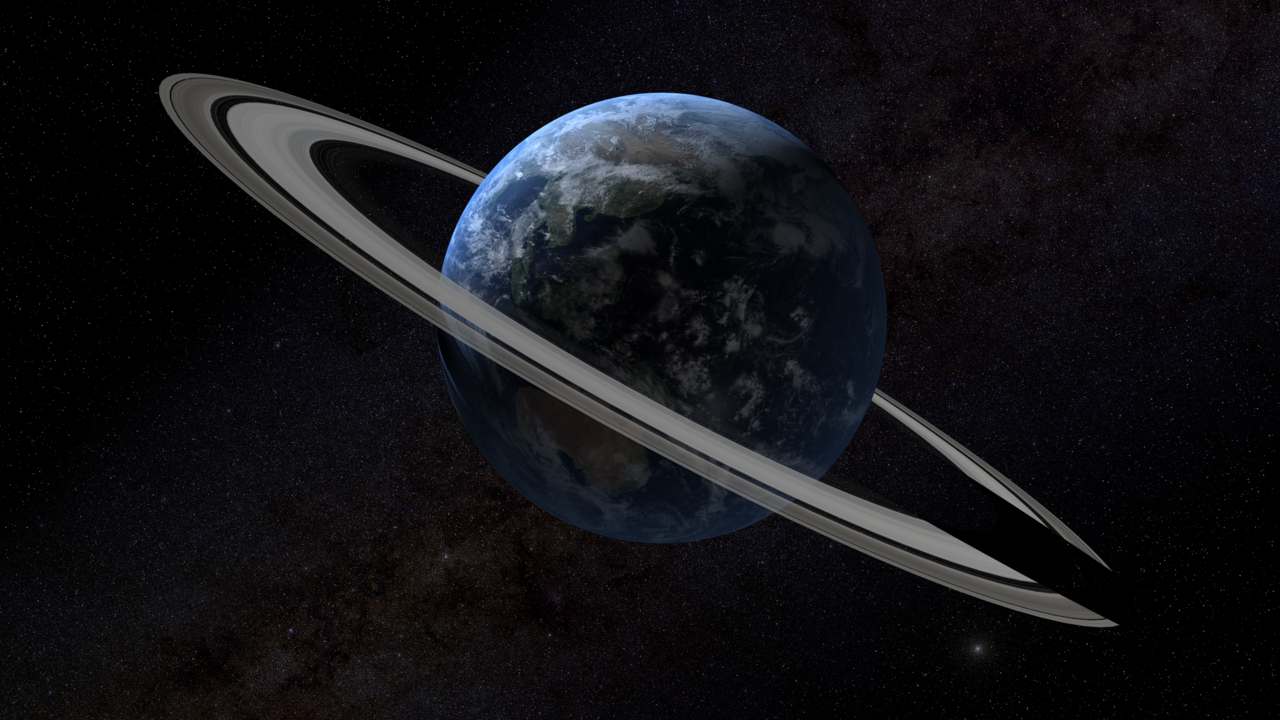
However, the energy of these impacts would be dramatically lower compared to the energy of an asteroid or comet that would strike the Earth. A typical asteroid striking the Earth hits us with a speed of around 20-30 km/s, depending on its relative motion to Earth’s orbit. A typical comet that strikes the Earth comes in with a speed between 50-100 km/s. However, lunar debris from a (hypothetically) destroyed Moon that strikes the Earth would come in with an impact velocity of only around 7-9 km/s: a factor of three slower than an asteroid and a factor of ten slower than a comet.
This is important, because the kinetic energy of an impact event is proportional to the impact velocity squared, meaning that for any piece of lunar debris of a given mass, the energy imparted to Earth is just about ~10% of what an asteroid strike would cause, and a mere ~1% of what a comet strike would cause.
Sure, the pieces of debris that did strike the Earth would be destructive, but likely only on a local scale: the same way the Tunguska or Chelyabinsk impact events were destructive where they occurred, but only led to optical and sonic displays in even the surrounding areas. While destroying the Moon would require an incredible amount of energy, the effects of destroying it shouldn’t pose an extinction-level threat to life presently on Earth.
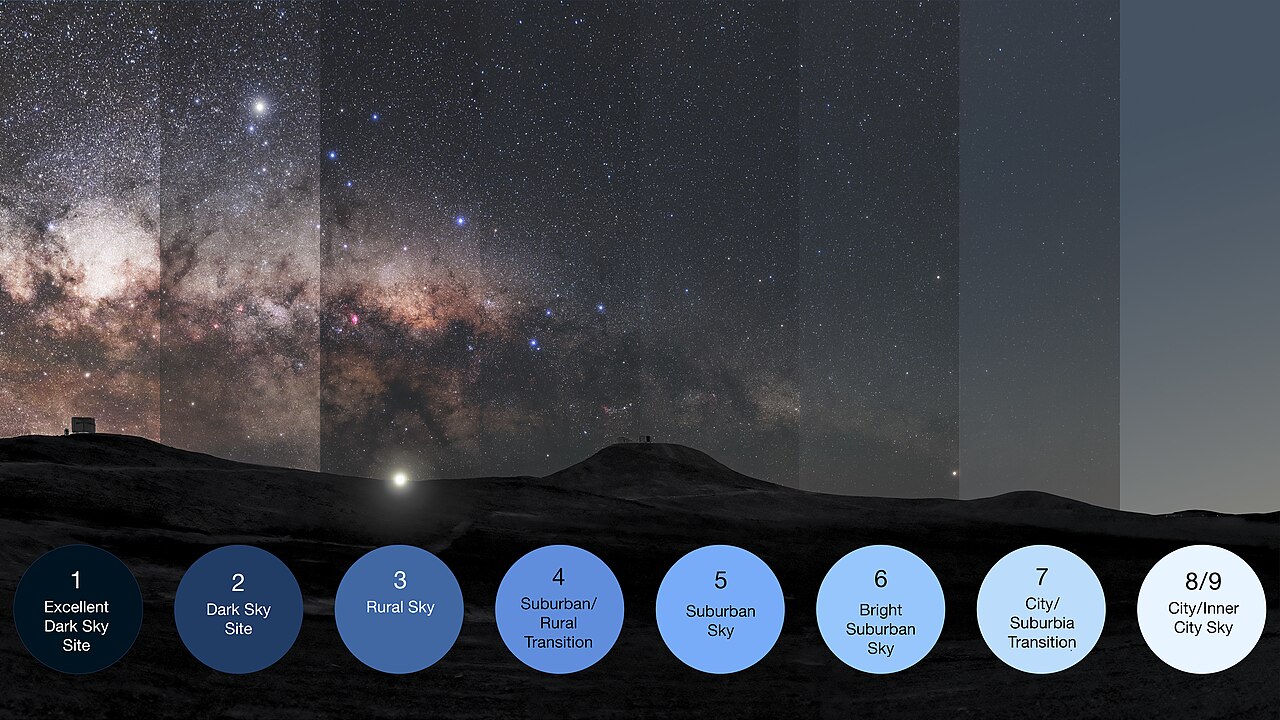
2.) Nights would be naturally much darker. How many stars can you see at night when you look up at the night sky? From a bright urban area, like New York City, only the few dozen brightest stars might be visible, as light pollution is severe. From suburban areas, that number might jump up to a couple of hundred, while a truly dark, rural sky will allow you to see several thousand stars at once, as well as deep-sky objects and the plane of the Milky Way. For most of us, light pollution — caused by inefficient electric lighting at night — is our primary barrier to seeing the spectacular night sky in its full splendor, a splendor that was ubiquitous for billions of years, with the pollutive effects of thousands of new, bright, reflective satellites marking a relatively new concern.
But even under pristine conditions, a bright moon can severely pollute your sky. The Moon, when in its full phase, is a full 14,000 times brighter than the next brightest object in the sky: Venus. The presence of the Moon alone can raise the rating of your Bortle Dark-Sky Scale, which measures your level of light pollution, all the way up to a 7 or even an 8, even without any artificial sources of light pollution present. If the Moon were destroyed, particularly once any leftover debris from its destruction were fully cleared out, our greatest natural source of light pollution would be eliminated. From a dark-sky site on Earth, every meteor shower and all telescopic observations would experience exquisite observing conditions.
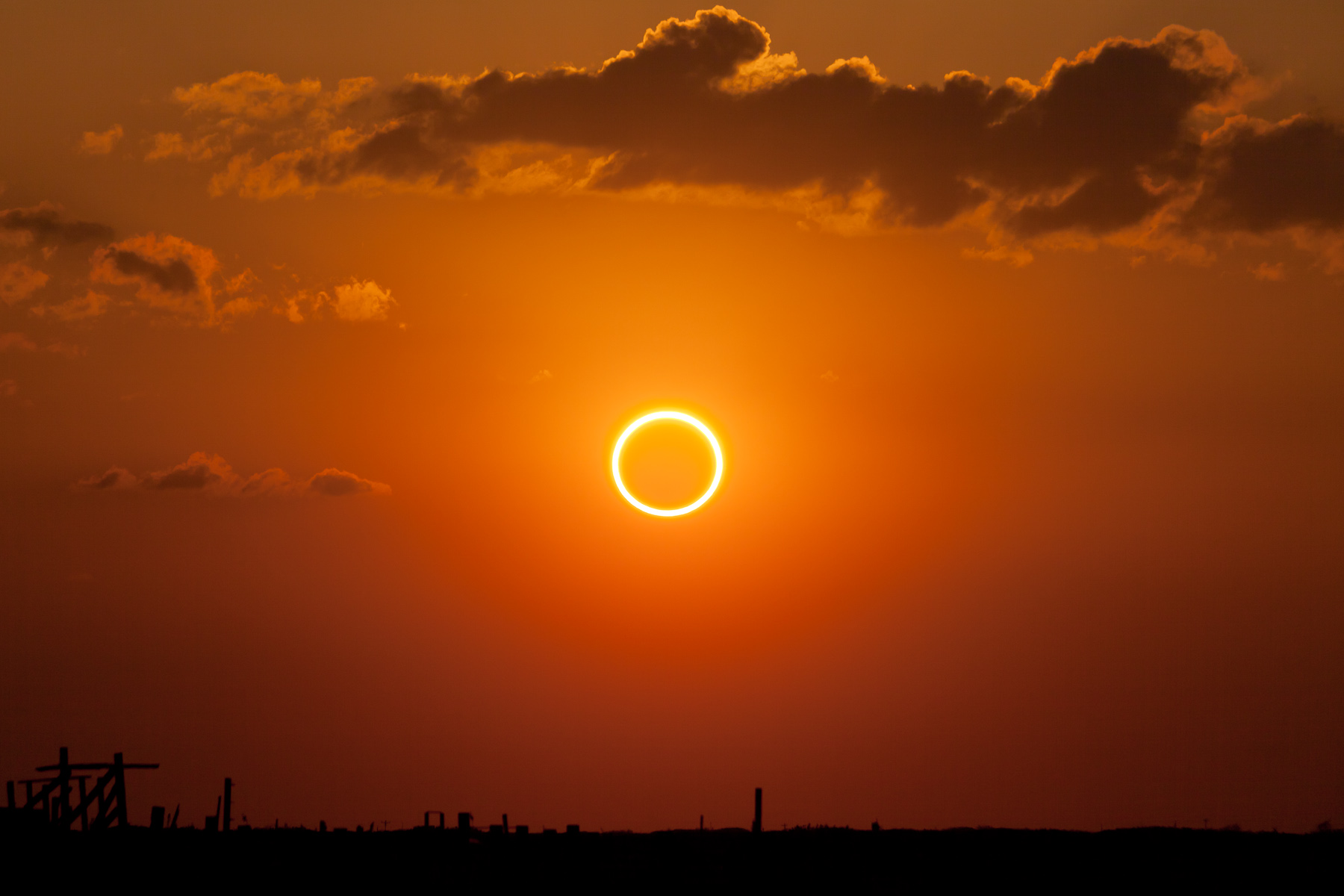
3.) The lack of a moon would bring an end to eclipses. In order to have an eclipse, you need for three objects to be aligned:
- the Sun, which emits light that gets absorbed and reflected by all objects,
- the Earth (or any planet), where your observers are stationed to view the eclipse,
- and a moon (or any satellite),
where that moon can either pass between the Sun and a relevant planet to create a solar eclipse, or can pass into the shadow-cone cast by the planet to create a lunar eclipse.
Here on Earth, at present, we have an enviable set of conditions where our Moon is close enough, large enough, and in an appropriate orbit so that it can completely block the disk of the Sun when it passes between the Earth and Sun, and so that the Moon’s shadow can fall directly onto planet Earth itself, creating the conditions for a total solar eclipse. Additionally, the Moon is in an elliptical orbit, so that when it’s at its farthest from Earth, it can no longer block the disk of the Sun, and so even perfectly-aligned solar eclipses can only be annular in nature. Finally, when the Moon passes into the shadow-cone of Earth, we experience a lunar eclipse. So far, we are the only known body in the Universe to experience all three of these types of eclipses; without our Moon, we wouldn’t have any of them at all.

4.) We would still have tides, but they’d be tiny compared to modern tides. The differences between “high tide” and “low tide” can be severe here on Earth, particularly for those of us who live near coastal waters, and especially if we find ourselves in a bay, sound, inlet, or other area where water commonly pools. Our tides are primarily due to the effects of the Moon, which contributes roughly 75% of Earth’s total tides, and only secondarily due to the effects of the Sun, which contributes the other 25%.
During full moon and new moon phases, when the Sun, Earth, and Moon all align, we experience what are known as spring tides, which exhibit the highest high tides and the lowest low tides. When the lines made by the Earth-and-Sun versus the Earth-and-Moon are instead at right angles, during a first quarter or last quarter moon, we experience neap tides instead, where high tides and low tides only possess half the amplitude of spring tides.
But if there were no Moon at all, our tides would be exclusively determined by the Sun, and would only be half-again as small as they are during neap tides: half the magnitude of the smallest tides presently on Earth. Without the Moon, we’d still have tides, but they’d be much smaller than the tides we possess on our planet today.
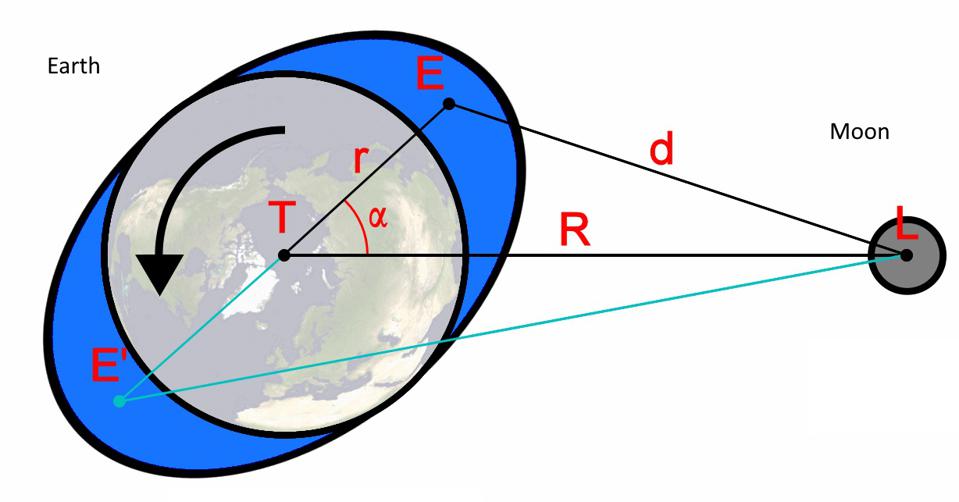
5.) The length of a day would cease to increase. As the Earth spins on its axis, the Moon — massive and close by — exerts not only a gravitational force on the Earth, but a tidal one as well: where the “near part” of the Earth experiences a greater force than the “far part” of the Earth owing to the gravitational attraction of the Moon. Although this effect is tiny on the scale of a human lifetime, the amount of time it takes the Earth to make a full 360° rotation, what we commonly know as one day, lengthens by about 14 microseconds with each year that passes. After another 4 million years go by, the day will be 56 seconds longer than it is today: exactly the right amount to eliminate the need for Leap Years, as Earth will then orbit the Sun in exactly 365 days.
We have evidence that some 620 million years ago, just prior to the Cambrian explosion, the length of a day on Earth wasn’t 24 hours, but was instead just under 22 hours; it’s primarily the effect of the Moon that causes our day to progressively lengthen. Without the presence of a Moon, the day would cease to lengthen in any meaningful way, as not only would the tides be merely one-third the size that they are today, but that tidal friction would have to be induced by the Sun instead of the Moon, resulting in a slowing effect that’s thousands of times smaller than the one we experience today. With our Moon present, the Earth will someday slow down so that its day becomes longer than a day on Mars; without our Moon, Mars’s day would remain longer until the Sun itself reaches the end of its life.

6.) Earth’s axial tilt would destabilize. Right now, planet Earth rotates about its axis as it revolves around the Sun, and our axis is tilted at approximately 23.4° relative to the plane of our revolution, which is known to astronomers as our obliquity. Over the timespan of tens of thousands of years, our obliquity actually oscillates periodically, from a minimum of 22.1° up to a maximum of 24.5°, and then back down over and over again. If it weren’t for our Moon, however, our obliquity would change much more dramatically than this, as the gravitational force from the Moon actually helps stabilize Earth’s axial tilt.
For comparison, Mars is the next planet out from the Sun, and although it has two moons of its own, they’re small and very low in mass. Right now, Mars’s obliquity is very similar to Earth’s, at 25.2°, but this is not a stable value at all. Geological evidence points toward Mars’s obliquity changing significantly over hundreds of thousands or even millions of years, from as little as 0-10° at minimum up to 50-80° at maximum, with a cycle of approximately 2.5 million years. Without a Moon, our axial tilt would vary by at least a factor of ten greater than the present-day variation in our obliquity, and over millions of years, we would experience both seasonless periods and more severe seasons than anything life on Earth has ever known. Our axial tilt, and hence, our seasons, are only stable because of the presence of our Moon.

7.) We’d lose our closest stepping stone to the rest of the Universe. In the late 1960s, just a few decades after the invention of the first airplane, humanity took our first steps on the surface of another world: the Moon. From 1969 to 1972, twelve humans set foot on the lunar surface, and in all the time since, no human has repeated the feat or even set foot on any world other than Earth. Why was this possible? One major factor is that the Moon is, at least on a cosmic and planetary scale, incredibly close to Earth. At an average of just 380,000 km distant, a conventional rocket can make a one-way journey to the Moon in just three days, and a round-trip signal at the speed of light — from the Earth to the Moon and back — takes a mere 2.5 seconds.
Without the Moon, what would our next-closest options be? A world like Venus or Mars, which even at closest approach to Earth, are 38 million and 56 million kilometers away: a hundred times the Earth-Moon distance or more. Round-trip communications take several minutes instead of just a few seconds; a one-way journey takes months instead of days; a round-trip journey requires at least a year instead of about a week. In addition, these other worlds have atmospheres, winds, significant gravity, and harsh environments to contend with, whereas the Moon is airless and low in mass. Our “stepping stone” to the rest of the Universe, although it’s been undervalued and underutilized over the last half-century, possesses an immense value in the endeavor of human spaceflight.

No matter how we imagine life without our Moon, it would be different in numerous significant ways. Some of those differences would only be minor — like losing eclipses, having smaller tides, or having consistently dark night skies — but some of the differences would have major implications for how life evolved on Earth moving forward.
Without our Moon, our axial tilt would destabilize, leading to extreme variations in seasons and making even Game of Thrones winters seem quaint by comparison. Back in Earth’s early history, it’s likely that a full rotation required only 6-to-8 hours instead of the modern 24, and there were over 1000 days in a calendar year; without a Moon, all subsequent day-lengthening effects would be absolutely negligible. And whereas the Moon has served us well as a testing ground for all of our first steps into the Universe, for both crewed and uncrewed missions, the lack of one would make exploring the Universe at all a much more daunting proposition.
Although humans may be all too eager to chalk up many apparently cyclical phenomena to being caused by the Moon where no such connection physically exists, the reality is that many aspects of our planet’s history truly are reliant on our large, natural satellite. The next time you think about destroying the Moon, remember what it brings us and be grateful for its companionship instead.
